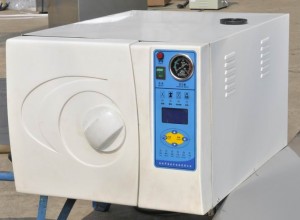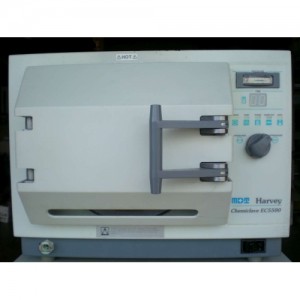Definition:
Is defined as freeing the object or substance from all life of any kind
OR
It is defined as the process by which an article, surface or medium is freed of all micro organisms either in the vegetative or spore state
Disinfection:
It means the killing, removal or destruction of organisms capable of causing infection namely pathogens
Disinfectant is an agent accomplishing disinfection it is applicable to inanimate objects
Antiseptic:
Closely linked to disinfection, it inhibits or destroys pathogens and is applicable to living tissues.
Classification
1) Mechanical or physical
2 ) Chemical
Mechanical or physical
Mechanical is further classified into
1) Sunlight
2) Drying
3) Dry heat- this includes flaming
4) Moist heat includes pasteurization, boiling, steam under normal and high pressure, chemical vapor under pressure,
tyndallization,
5) Filtration including candles, asbestos, pads, membranes
6) Radiation
7) Ultrasonic and sonic vibrations.
8) Chemicals: Alcohols, aldehydes, dyes, Halogens
Phenols, surface active agents metallic salts and gases
Methods of Sterilization:
The most reliable agent for destroying microorganisms is heat. Methods of sterilization in endodontic practice include steam under pressure. Unsaturated chemical vapor. Prolonged dry heat, rapid dry heat, intense dry heat, ethylene oxide gas, and glutaraldehyde solutions
Steam Under Pressure:
The autoclave is the most common means of sterilization, except when penetration of steam is limited or heat and moisture damage is a problem. Moist heat kills microorganisms through protein coagulation, RNA and DNA breakdown, and release of low-molecular – weight intracellular constituents.
The auto clave sterilizes in 15 to 40 minutes at 249.80 F (1210 C), at a pressure of 15 psi. The time required depends on the type of load placed in the autoclave and its permeability. Once the entire load has reached temperature 249.80 F (1210 C), it will be rendered sterile in 15 minutes. An adequate margin of safety for load warm – up and steam penetration requires an autoclave time of at least 30 minutes.
Advantages:
Steam under pressure has a relatively quick turnaround time for instruments.
Steam under pressure offers excellent penetration of packages.
Steam under pressure will not destroy cotton or cloth products.
Disadvantages:
Materials must be air dried at completion of the cycle.
Because certain metals may corrode or dull, antirust pretreatment may be required. Most stainless steel instruments are resistant to autoclave damage.
Steam under pressure can destroy heat-sensitive materials.
Unsaturated Chemical Vapor:
This system, using a device that is similar to an autoclave, is named a Harvey chemiclave or chemical vapor sterilizer. The principle of chemiclave sterilization is that although some water is necessary to catalyze the destruction of all microorganisms in a relatively short period of time, water saturation is not necessary. Like autoclave sterilization, chemical vapor sterilization kills microorganisms by destroying vital protein systems.
Unsaturated chemical vapor sterilization uses a solution containing specific amounts of various alcohols, ketone, and formaldehyde and a water well below the 15% level where rust and corrosion occurs. When the chemiclave is heated to 2700 F (1320 C) and pressurized to at least 20 psi, sterilization occurs in 20 minutes
The vapor must be allowed to circulate freely within the chemiclave and penetrate instrument wrapping material. The vapor has a definite characteristic odor. Adequate ventilation is a necessity when a chemical vapor sterilizer is being used. New models have built in filters or vacuum manifolds that remove the odor of the residual vapors.
Advantages
Unsaturated chemical vapor will not corrode metals.
Unsaturated chemical vapor has a relatively quick turnaround time for instrument
Load comes out dry.
Disadvantages:
Vapor odor may be offensive, requiring increased ventilation.
Special chemicals must be purchased.
Unsaturated chemical vapor can destroy heat sensitive materials
Prolonged Dry Heat:
Dry heat sterilization, like chemical vapor and autoclave sterilization, is verifiable. Dry heat is very slow to penetrate instrument loads. Dry heat sterilizes at 3200 F (1600 C) in 30 minutes, but instrument loads may take 30 to 90 minutes to reach that temperature.
Dry heat kills microorganisms primarily through an oxidation process. Protein coagulation also takes place depending on the water content of the protein and the temperature of sterilization.
Advantages :
Prolonged dry heat has large load capability
Prolonged dry heat offers complete corrosion protection
Equipment is of low initial cost.
Disadvantages:
Prolonged dry heat provides slow instrument turnaround because of poor heat exchange.
Sterilization cycles are not as exact as in moist heat sterilization.
Dry heat sterilizer must be calibrated and monitored.
If sterilizer temperature is too high, instruments may be damaged.
Rapid Dry Heat:
Small chamber high, speed dry heat Sterilizers have been developed primarily for use in dentistry. Load limitations exist, but these devices are much faster than prolonged dry heat. This type of Sterilizer has the advantages of prolonged dry heat described above without many of the disadvantages.

